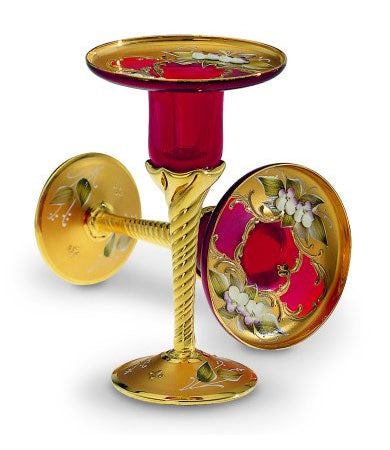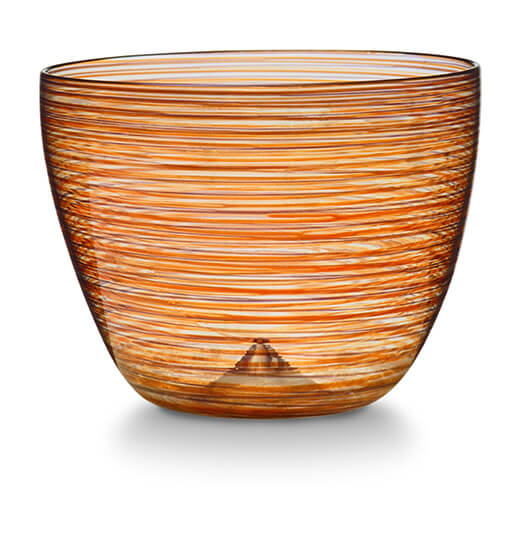While up to the mid-nineteeth century every craftsman made his own enamel on the basis of very particular and jealously-kept recipes, it later became fashionable to adopt vitreous enamels produced on an industrial scale.
They must have the following features: applied while cold to the item during manufacture, they must fuse at a temperature lower than that of the glass; their colours should not fade at high temperatures and they should have a coefficient of expansion as close as possible to that of glass to prevent breakages during the cooling stage. Once the decoration is finished, the item is placed in a small "muffola" oven where it reaches a temperature of some 550/600 Celsius degrees to allow the enamel to fuse without deforming the item. In the Novecento this technique was used to make copies of ancient models, but a few exceptions.Privilege Club
Be the first to get news and offers.
Subscribe now to Privilege Club, the MuranoNet newsletter.
With your subscription you get a 10% discount on your first online purchase!



1 comment
Ferlyn Forteo
Where can I order like this??? Please help me🥹🥹🥹🥹
Leave a comment
All comments are moderated before being published.
This site is protected by hCaptcha and the hCaptcha Privacy Policy and Terms of Service apply.